
Original Link: https://www.anandtech.com/show/1661
MCE TV Tuner Roundup: Featuring ATI's Theater 550 & NVIDIA's NVTV
by Anand Lal Shimpi on April 12, 2005 6:26 PM EST- Posted in
- GPUs
TV tuners have been on the PC for an extremely long time. Unfortunately, it wasn't until most recently that they were ever really taken advantage of. In the past, TV tuner cards were useful for recording your favorite TV show, but mostly for just being able to watch TV on your computer monitor. A PC armed with a TV tuner card was far from a full-fledged PVR, even though ATI came close numerous times with their Multimedia Center interface. In the end, a TV tuner became a nice toy to have on your PC, but could hardly offer the type of functionality that a set-top box such as a TiVo or ReplayTV could offer.
That all changed when Microsoft released Windows XP Media Center Edition. Bringing the first true 10-foot UI to the PC, Media Center Edition (MCE) all of the sudden made a TV tuner less of a toy, and more of an integral component of a modern PC. What Microsoft accomplished with MCE was creating a user interface that looked and felt like what you'd find on a normal consumer electronics device, not a PC. By doing that, MCE became an extremely attractive, but expensive, alternative to set-top PVRs.
Despite the high cost of entry compared to a cheap TiVo, MCE PCs are still quite popular - especially now that it is easy to build one on your own. You can purchase a copy of Windows XP Media Center Edition 2005 through online vendors, along with a MCE remote. With the software in hand, your next task is to assemble a PC. Components like your motherboard, CPU and memory are all easy to choose - you want the fastest that your budget will allow you to buy, and something stable too, since MCE puts a pretty big strain on your system.
Next up is your graphics card; if you are looking for a gaming machine as well as an MCE PC, then your choice is going to be something that obviously works well as a gaming GPU, but if not, then even a lowly GeForce FX 5200 will work just fine. Both ATI and NVIDIA have MCE certified GPU drivers, which you will need if you're building an MCE box.
The final step is to pick out a TV tuner, and this is where today's article comes in. Choosing a TV tuner for a MCE PC is a bit easier than just picking any TV tuner out there. The first requirement is that the tuner has official MCE support. You'll need a MCE driver for your tuner to work with the OS, so if one isn't available for the card that you're looking at, then you know to look elsewhere.
A major constraint to Media Center Edition is that it supports HDTV in a limited fashion, primarily in that it only supports over the air broadcasts - so none of your premium HD content can be viewed/recorded by MCE. Even though the trend is to move towards HD, today's comparison is of standard definition TV tuners for MCE; even if you plan on having a HDTV card in your MCE box (e.g. ATI HDTV Wonder), you still need a SD TV tuner card as well. Given that we're still talking about SD signals, which are inherently full of noise and aren't very high resolution at all, are there any differences between TV tuners or should you just go out and purchase the cheapest one that works?
For this article, we took 6 of the most popular MCE compliant TV tuners and pitted them against one another, trying to figure out if there's any difference between them all, and if there's one clear winner. The cards included in this roundup are:
- ATI's eHome Wonder
- ATI's TV Wonder Elite
- AverMedia M150
- eMuzed Maui-II PCI PVR
- Hauppauge WinTV PVR-250
- NVIDIA's dual tuner NVTV
The Test
Testing TV tuners, especially comparing based on image quality, is a tough thing to do; the main problem is that there's no good test scene that's repeatable across multiple systems. Testing video capture functionality is easy. Simply play a non-encrypted DVD over and over again and compare image quality - but you can't really tell a TV channel to put its contents on repeat so that we can see how the same scenes look across 6 different TV tuners.
Using something like cable on-demand doesn't really work either because then, you're left using an external tuner to actually get the signal, and simply test, the TV tuner's ability to capture an external signal, not receive and tune a cable channel.
Luckily, there are two TV channels that are perfectly designed for the task at hand: CNN Headline News and The Weather Channel. Both of the aforementioned channels repeat their content, usually every half hour, for several hours at a time. Armed with 6 TV Tuners and a Sunday of nothing to do but watch the same 30 minutes of headlines over and over again, we had our test platform. Even after doing this, it's still tough to get frame for frame, identical comparisons across the TV tuners. So often times, we'll resort to using different scenes to illustrate strengths and weaknesses of the TV tuners. Rest assured that our findings came to be after spending quite a bit of time with each one of these tuners.

CPU utilization wasn't a concern, as all of the tuners ate up less than 7% of our CPU while recording. Given that you can't really run Windows XP Media Center Edition without a fairly fast processor and that all of the cards compared here today are full hardware MPEG-2 encoders, there's not much to talk about with CPU utilization.
The Platform
Not everyone is looking to build their own MCE box, and luckily, prices have come down tremendously on pre-built MCE machines. For this review, we had a chance to play around with WinBook's PowerSpec MCE 410 - a $999 MCE 2005 system (after $200 mail-in rebate).
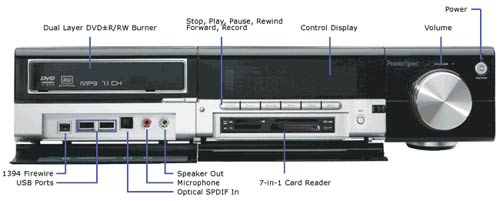
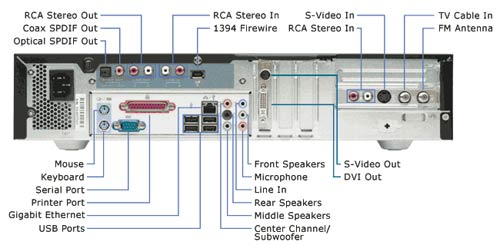
The system is configured with a Pentium 4 530 (3.0GHz), 512MB of DDR400, ATI X300SE, a 160GB hard drive and a 16X dual layer burner, all on a FIC 915G motherboard.
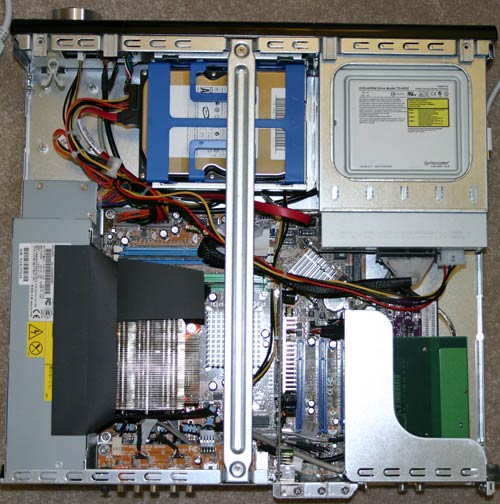
The case of the MCE 410 is a little too shiny for our tastes, but still very subtle and it looks quite at home in your home theater. We would've preferred something with a matte finish or maybe even something with a silver/aluminum finish, but the MCE 410 is one of the nicer looking systems out there.
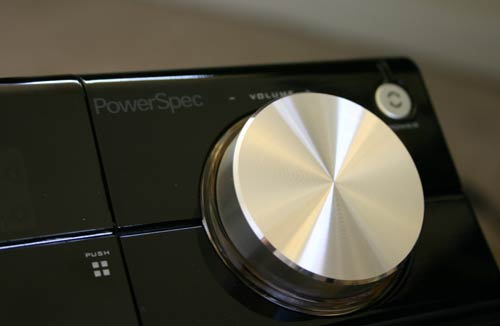
A jog dial controls the volume
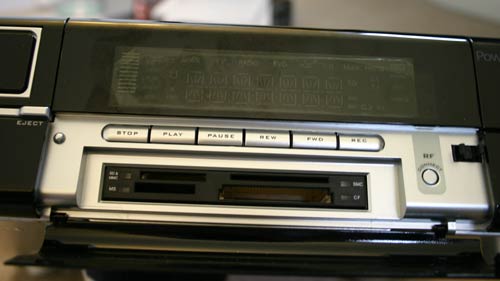
Front mounted card reader...
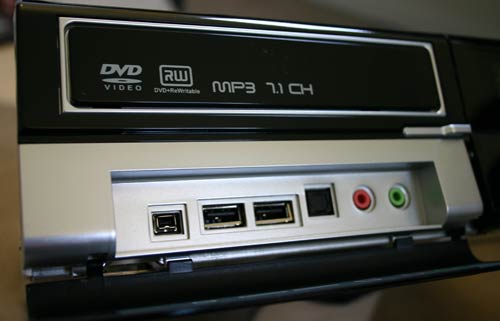
...and front mounted USB/Firewire/audio ports
Because of the low profile, the MCE 410 can't really function as a gaming box - you can only install low profile graphics cards, which limits you to the X300 class of GPUs at this point. Thanks to a riser card, you can install two normal height PCI cards, but they can't be longer than about 6.5"; otherwise, they will interfere with the DVD drive.
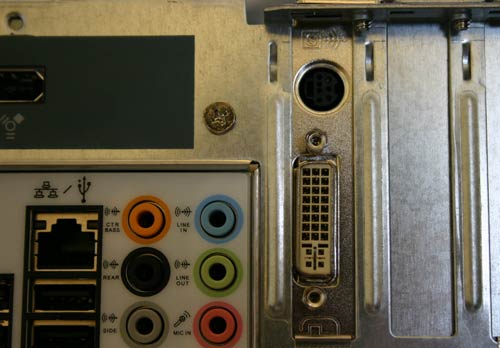
Low profile X300

The performance of the Pentium 4 530 is more than acceptable for an MCE machine. The program guide is quite fast and responsive and we didn't have any hiccups during our use of the system.
Quite possibly one of the biggest attractions to the system is the fact that it relies on a single fan, the power supply fan, to cool the entire system (including the CPU). Because of this, the Samsung SpinPoint HDD is the loudest component in the system - which, for the most part, means it's pretty quiet and you get absolutely no fan noise.

Also priced at $999, WinBook offers a 30" LCD TV with a 1280 x 768 native resolution. WinBook sent us the display to try out with the system, and while we thought that the panel itself was decent, our biggest problem with it was its native resolution. At 1280 x 768, there's inherently a small amount of scaling for 720p content, which isn't desirable for the role of a LCD TV.
Now, you have an idea of our test platform. Although, a custom built MCE box would do just fine as well, so let's get to the contenders...
Fifth Place: NVIDIA NVTV
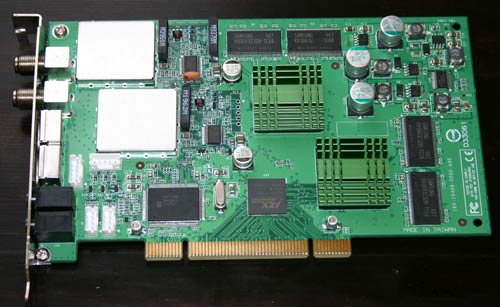
NVIDIA's NVTV launched alongside Media Center Edition 2005 as the first single-slot, dual tuner PCI card with MCE 2005 support. Despite the fact that it is a NVIDIA branded TV tuner, it uses a pair of LSI DVXPLORE codecs. These are the same codecs used on the eMuzed Maui board. However, given the large difference in image quality between the two boards, we'd say that NVIDIA's digital tuners are responsible for NVIDIA's 5th place showing in this comparison.
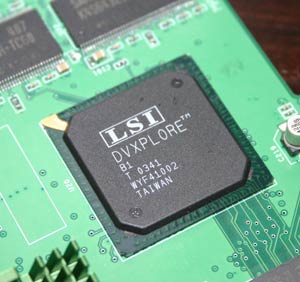
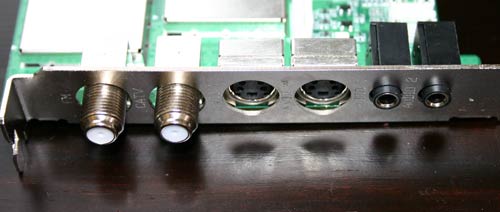
The convenience of having two tuners on a single PCI card is outweighed by the fact that the NVTV produced the most grainy image out of any of the cards in this comparison. The graininess was very detectable during normal viewing and it definitely impacted the experience.

NVTV

Hauppauge WinTV PVR-250

The NVTV card also exhibited a noticeable amount of ghosting around the Headline news bar at the bottom of the screen, an effect that wasn't present on any of the other tuners.

Note the ghosting above the topmost yellow line
Our final complaint with the NVTV card was related to its displaying of text - there was a lot of noise in any text that appeared on the screen. The text problem was actually one that's common to most of the TV tuners in this roundup, but the combination of that, the ghosting and the grainy picture assured NVIDIA's NVTV a last place showing in this roundup.

Note the artifacts over the letters "NCAA"
At $130 - $140 for a dual tuner card, the NVTV is fairly affordable, but considering the issues that we've had with it, we would not recommend it.
Fourth Place: AVerMedia M150
The AVerMedia M150 is an OEM TV tuner that ships with many MCE PCs, but is identical to the retail AVerMedia 1500 MCE. The M150 still uses an analog Philips tuner, but there are no real issues with going that route.

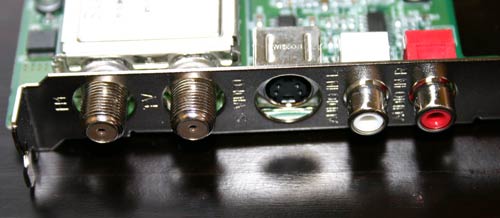
The image quality of the M150 is actually fairly difficult to discern from the third place TV tuners of this comparison in all but one aspect: text display.

The overall picture looks reasonable...
The M150 actually displayed the worst example of artifacts in text effects of any of the cards in this roundup. You can see a perfect example of that below:

Not so good - these sort of artifacts should not be present. The text itself is legible, but everything around it is distracting.
Other than the text issue, the picture quality of the M150 is pretty decent for a SD tuner. A big issue we found is that regardless of how good the tuner happens to be, the absolutely poor quality of SD cable made it very difficult for one tuner to hold an advantage over another. The biggest differences between many of these tuners happen to be in their handling of text on the screen.
The AVerMedia M150 can be found for around $60.
Third Place - Tie: eMuzed Maui-II PCI PVR
For the third place runner-up, we have a tie between the eMuzed Maui-II PCI PVR and ATI's eHome Wonder PCI.
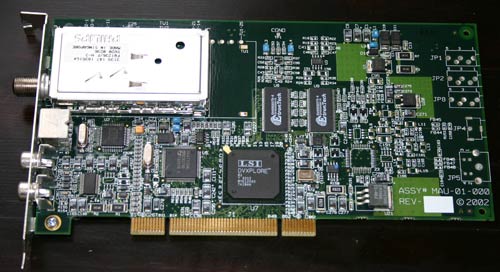
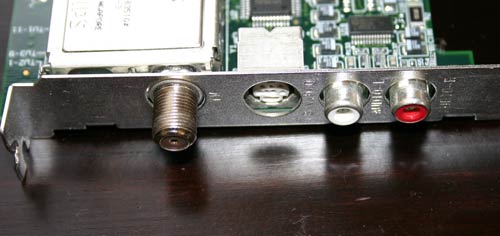
The eMuzed Maui-II PCI PVR is another very common OEM solution and despite the fact that it uses the same LSI DVXPLORE codec as NVIDIA's NVTV, the Philips analog tuner ensures that we don't have the same grainy picture issues that we had with NVIDIA's card.

The Maui offered fairly competitive picture quality, although slightly noisier than our first and second place offerings. Once again, we see that the biggest problem ends up being how the tuner handles text. With fewer artifacts than the fourth place AVerMedia, eMuzed still can't display text perfectly. It's not exactly text, but rather borders with any sort of movement in them is where you get most of the problems.

Note the dots in the line above the text

The text artifacts are present here as well.
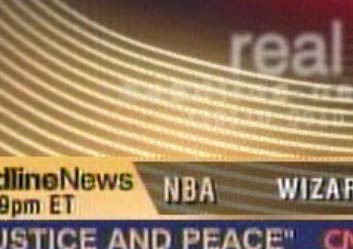
You can get an idea of some of the level of noise here.
Although it's fairly hard to find, the eMuzed Maui-II goes for under $99.
Third Place - Tie: ATI eHome Wonder
Using the Theater 200 chip, ATI's eHome Wonder is a fairly popular solution.
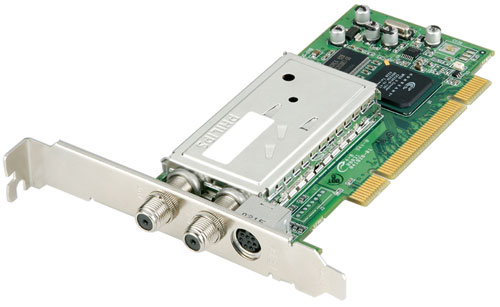
Like the eMuzed Maui, the eHome Wonder exhibited similar issues with text boxes - however, to a much lesser extent than the Maui. ATI's major drawback here is that the colors appeared to be much more washed out on the eHome Wonder than the Maui; it wasn't horribly distracting, but it kept the eHome Wonder out of the top two places.

This is a perfect example of the washed out colors (note the skin and the pump) on the eHome Wonder.

Overall, the picture looks pretty decent. Although, you can see issues with the text box in the lower left corner.

The eHome Wonder is quite affordable, priced around $60.
Second Place: Hauppauge WinTV PVR-250
Hauppauge is a name that has been around in the PC TV tuner business for a very long time and they are also extremely common in the MCE scene. Note that while Hauppauge has a fairly extensive lineup of TV tuners, most of them are quite similar to one another. For example, the WinTV PVR-250 is identical to the PVR-500, although the latter has two tuners. The PVR-250 is also identical to the PVR-250MCE and the PVR-350.


The WinTV PVR-250 actually offered significantly better image quality than the competition. Everything looked a lot softer rather than having that hard grainy look that we saw in the previous runner-ups.

The overall picture is quite good, although the colors are a bit oversaturated. In the lower middle you can see minor text box issues.
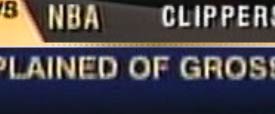
There were very few text box related issues with the PVR-250, basically nothing compared to the previous few cards. You do pay for the image quality though. The WinTV PVR-250 sells for between $130 - $150, over twice as much as the 3rd place ATI eHome Wonder. At that price, it's tough to justify the Hauppauge, even taking into account the image quality benefits.
First Place: ATI TV Wonder Elite
For just about a year now, we've been hearing about ATI's Theater 550 chip, the successor to the highly successful Theater 200 used in the eHome Wonder. The Theater 550 was a bit of a let down in that it seemed a lot like a new release of old technology. What we wanted to see was a hardware MPEG-4 encoder from ATI and what we got instead was the promise of the best hardware MPEG-2 encoder ever. Although it's not the promise we wanted, ATI did deliver exactly what they set out to do.
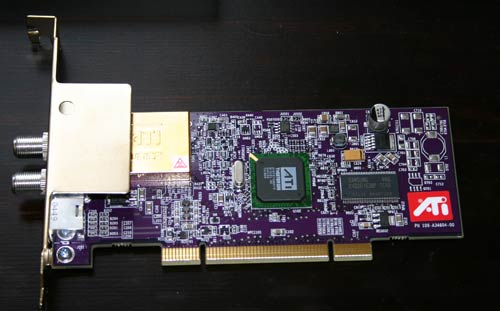

The most noticeable feature of the TV Wonder Elite was that all of the text box issues, which we saw in the competing cards, were gone.

A clean picture and note that there are no issues around the text boxes.

You can't get totally sharp text off of a SD signal, but you get text that's very legible and artifact-free with the TV Wonder Elite.
Upon closer investigation, the image quality of the TV Wonder Elite is better in many little ways compared to the competition here. The color reproduction is much more true. There are much lower levels of noise and you can even see detail in actors on the screen. Compared to the second place Hauppauge card, the differences are much more subtle, but in back-to-back comparisons, you do notice differences between the two cards. The Hauppauge does appear to have higher levels of color saturation, but the TV Wonder Elite seems to produce a more "correct" image.
ATI TV Wonder Elite
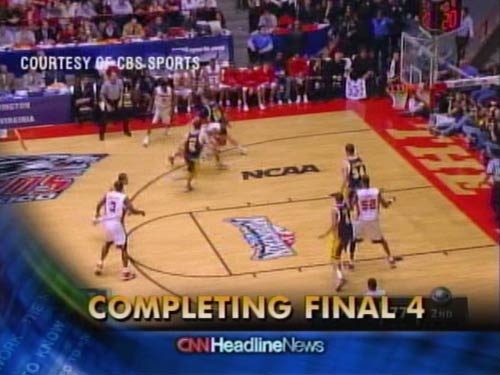
Hauppauge WinTV PVR-250
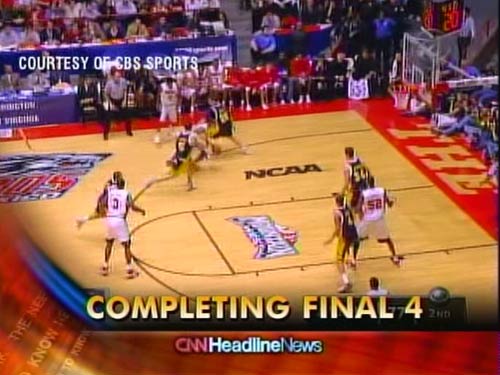
Ignoring the differences in border colors (the video feed in the center is still the same), the TV Wonder Elite offers more accurate color reproduction.
As slight as those differences may be, given the price parity between the Hauppauge and the TV Wonder Elite, we give the nod to ATI here.
What the TV Wonder Elite doesn't do, however, is the type of improvement in image quality that ATI's marketing material would have you believe; the biggest reason being that SD cable signals are simply not good enough for those types of improvements to be seen. The TV Wonder Elite isn't perfect, while it is still susceptible to the quality of your cable feed, but out of the competitors here, it's as good as it gets.
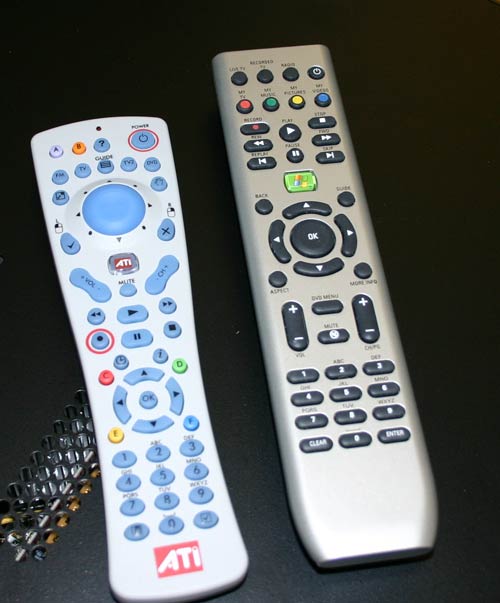
ATI's Remote Wonder Plus (left) vs. a standard MCE remote (right)
The retail TV Wonder Elite ships with ATI's new Remote Wonder Plus, a much improved remote control design over previous ATI remotes. Unfortunately, the Remote Wonder Plus will not function as a MCE remote. You'll still have to shell out the $30 for one of those if you're building a MCE machine.
Although we have specifically decided not to focus on software bundles (given that the premise of this roundup is finding a TV tuner card for a MCE system), ATI does ship the TV Wonder Elite with a copy of CyberLink's PowerCinema with an ATI skin. At first glance, the ATI Edition of PowerCinema looks a lot like a red version of the MCE interface. However, as soon as you start to use it, you realize its shortcomings. The interface is extremely slow to respond compared to MCE and it still features no integrated program guide, which renders it useless as a serious PVR tool by today's standards. As a standalone TV tuner, the TV Wonder Elite's bundle leaves much to be desired, but as a companion to Windows XP Media Center Edition, ATI has released the best quality tuner on the market from what we've seen.
The biggest drawback of ATI's TV Wonder Elite is its price point - between $140 and $160, the TV Wonder Elite is ridiculously expensive for a SD TV tuner. But if you want the best, it's your only option.
Final Words
Without a doubt, our two favorites from this review are Hauppauge's WinTV PVR-250 and ATI's TV Wonder Elite, with the overall win going to ATI for the TV Wonder Elite. If you're buying a card for your MCE system today, the TV Wonder Elite is the one to choose. Or if you already have a MCE machine and you have the Hauppauge card, then you're also sitting pretty. After hours of watching the same loop of CNN Headline news on these cards, the first and second place winners do offer a significant improvement in image quality over the remaining contenders - to the point where it is actually noticeable in day-to-day viewing.
The problem really isn't which card offers the best image quality, but rather how much money are you willing to spend for that last 5% of image quality - and here's where the decision gets tough. In most areas, SD cable is extremely poor quality to begin with. For many people, spending over $100 on a TV tuner just isn't justified to get an improvement on top of an already poor cable signal.
More than anything, ATI faces a major issue with the pricing and the release timeframe of the TV Wonder Elite. At this point, there's no excitement in yet another hardware MPEG-2 encoder, especially not one that weighs in at the top of the single tuner price class. Although ATI has done an excellent job with the Theater 550 and the TV Wonder Elite, it may just be too late to make a difference.
If you are less willing to spend money on a TV tuner (which is quite understandable), ATI's eHome Wonder and eMuzed's Maui-II PCI PVR are both excellent, lower priced alternatives. The ATI eHome Wonder is actually about half the price of the TV Wonder Elite, which means that you can actually end up with a dual tuner MCE box for the same price as a single tuner MCE box with the TV Wonder Elite.
By the end of this year, Windows XP Media Center Edition is supposed to have CableCard support, which will enable complete HDTV support for MCE boxes above and beyond the disappointing limitation for only over the air broadcasts that's in MCE 2005. Hopefully, this roundup will be a farewell to SD as we eagerly await the first HDTV tuners with CableCard support later this year.







